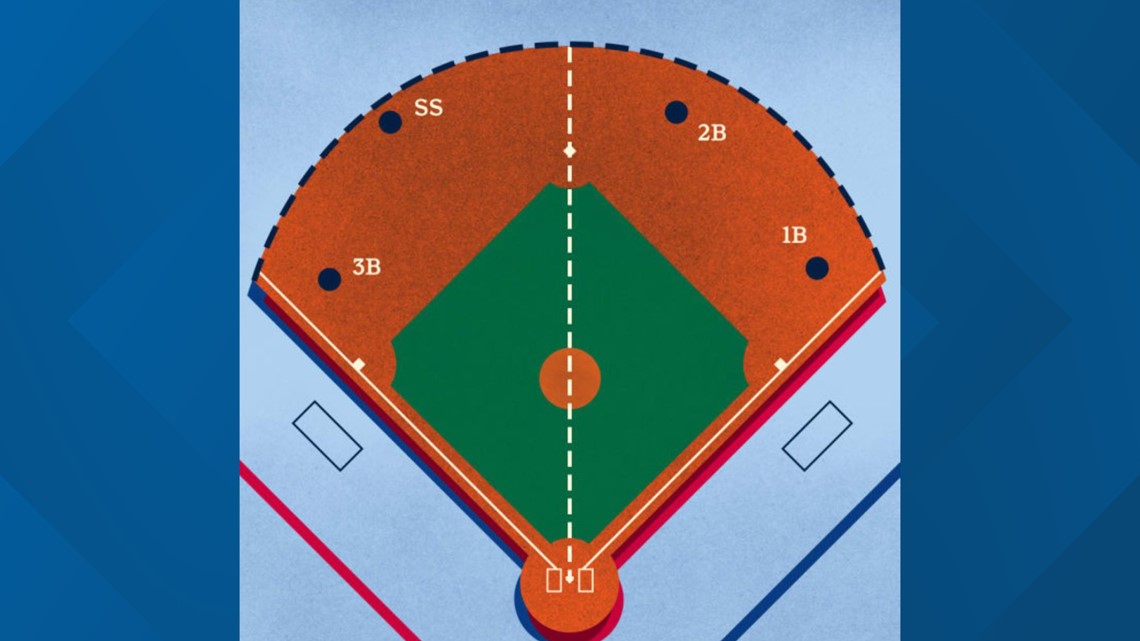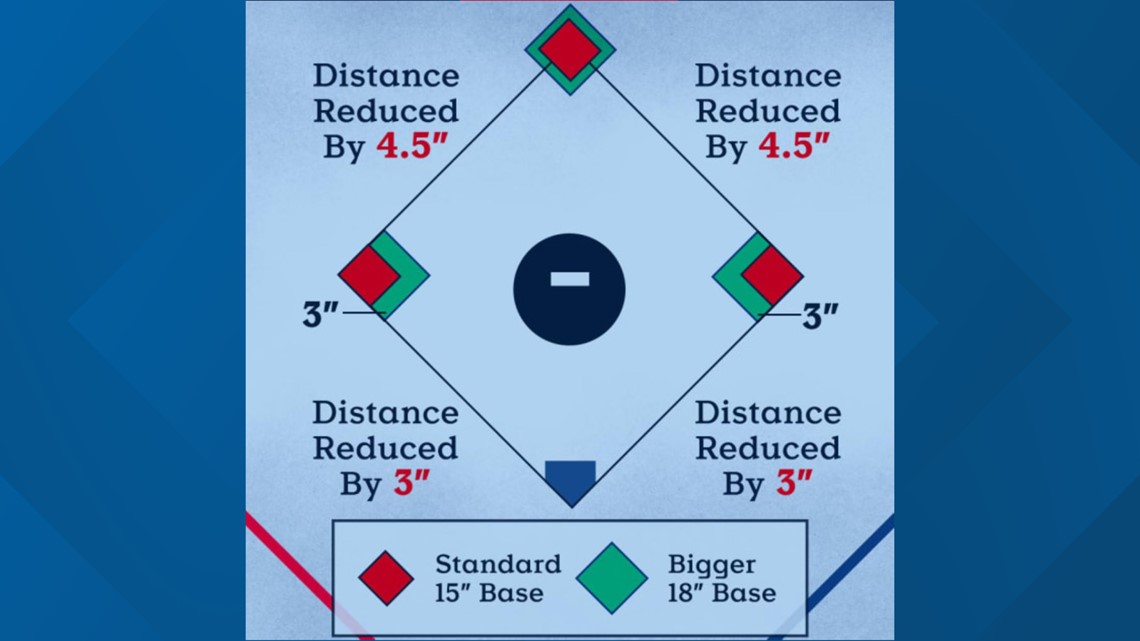CLEVELAND — When the Cleveland Guardians take the field in Seattle on March 30 for the official start of the 2023 season, the game may look a bit different to how you've come accustom to watching it over the past few years.
Five major rules changes will take effect this year all in an effort to speed the game up and make the game a more enjoyable entertainment product for our ever changing, fast-paced society.
Pitch clock
If you've followed any of the televised games during spring training or were out in Arizona watching them in person, you have already experienced the now brisk pace games will be played at in the 2023 season.
Here are the changes you will see on the mound and in the batters box:
- Pitchers will have 15 seconds between each pitch with the bases empty.
- Pitchers will have 20 seconds between each pitch with runners on base
- There will be a 30-second clock between batters.
- Violations of the above rules will result in a ball being added to the batter's current count.
- Batters must be in the box and "alert" by the 8-second mark. Violations will result in a strike being added to the batter's current count.
- Teams will get five mound visits throughout the course of the game. If a team has used all of their mound visits before the ninth inning, they will receive an additional mound visit.
According to the league's data on the pitch timer implemented in minor league baseball games in 2022, game length shortened by an average of 25 minutes.
The shift
This one is sure to turn the most heads in terms of how the game look once the ball is in play: Gone are the days where the right side of the infield is stacked with three infielders.
Here are the new changes you will see as teams line up defensively in the 2023 season:
- Two infielders must be positioned on either side of second base when the pitch is released.
- All infielders must have both feet in the infield when the pitcher is on the rubber.
- If an infielder is in violation of either of these rules at the time of the pitch, the offense can choose to an automatic ball to be added to the previous count or take the result of the play.


As seen in MLB.com's graphic above, the diamond is effectively cut in half, requiring a more traditional defensive setup on the infield.
With this change implemented in the minors, an increase in batting average and decrease in strike outs were seen across various leagues.
Bigger bases
One change that won't be so obvious will be on the bases themselves. Gone are the traditional 15-square-inch bases, to be replaced by 18-square-inch bases.
The larger area of the bases will cause the distance from home to first base and third to home plate to be reduced by three inches. The distance from first to second and second to third will be reduced by an even greater 4 1/2 inches.
At first glance, you may think to yourself, "Bigger bases? Is that really necessary?" According to the league, absolutely.
The 18-square-inch bases were implemented throughout minor league baseball for the 2022 season. According to the league's data, injury events near the bases reduced by more than 13% from previous years.


The bigger bases will also help reduce "over-sliding" the base, and while a few inches here or there might seen negligible in the spirit of player safety, the implications it may have for competitive play are very real (see next rule change).
Pickoff attempts
Another dramatic change in the spirit of speeding up the game will cause what has become somewhat of a lost art to return to the product at the major league level: stolen bases.
Here is the official rule change as outlined by the league:
- Pitchers will get two "disengagements" (pickoff attempts and/or step-offs) per batter. Each violation is a balk (runners advance).
The league yet again experimented with this rule in the minors in 2022. According to their data, limits on pickoff attempts led to a 26% increase in stolen base attempts.
Stolen bases have been trending down for much of the past decade. In 2021, teams recorded just 2,213 stolen bases, the lowest number since 1981. Compare that to 2011, when the number of total stolen bases was 3,279, more than 1,000 steals higher.
The Guardians are no stranger to utilizing the stolen base as a core piece of their offensive game plan. Myles Straw, Andrés Giménez, Steven Kwan, José Ramírez, and Amed Rosario all finished with at least 19 stolen bases in 2022. Expect those numbers to increase in 2023.
Pitching position players
Perhaps the most minor rule change involves a decrease in teams using position players to save their bullpen arms as games get lopsided in the later innings.
Position players will only be allowed to pitch in these circumstances:
- Their team is leading by 10 or more runs in the 9th inning
- Their team is losing by 8 or more runs at any time
- The game is in extra innings
According to league data, there were 132 instances of a position player pitching in the 2022 season.
What is MLB's reason for wanting to cut down that number? The league didn't say, other than providing additional data that this trend has increased by a staggering amount over the last several years, specifically by more than 250% from 2019 to 2021 when teams are trailing by six or seven runs and by 16% when down by at least eight runs.
Bonus: Extra innings 'ghost runner'
While this isn't a new rule for the 2023 season, the controversial "ghost runner" that starts on second base when any game goes into extra innings will now be permanent going forward. The playoffs will still not feature this rule.

